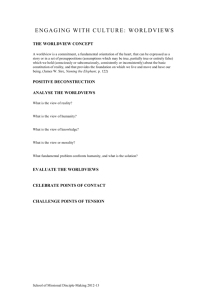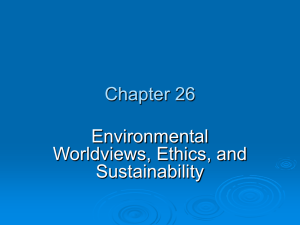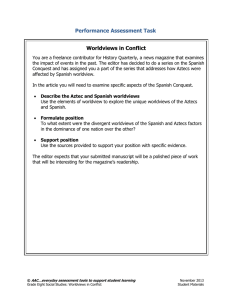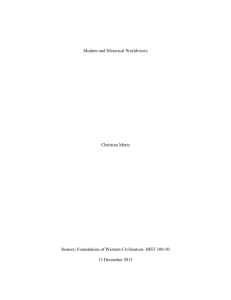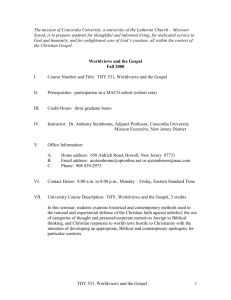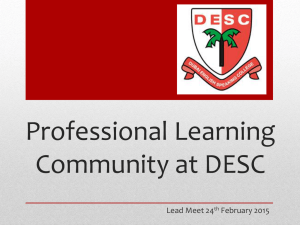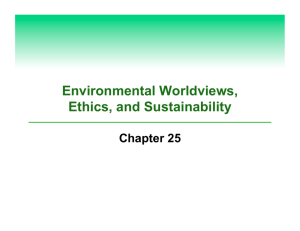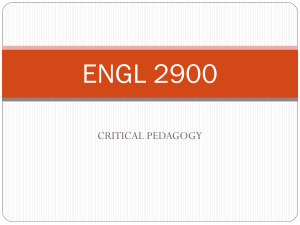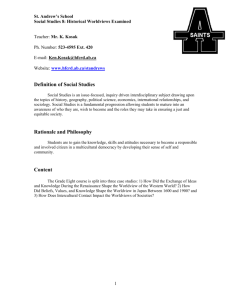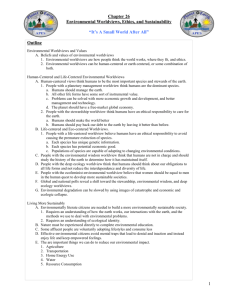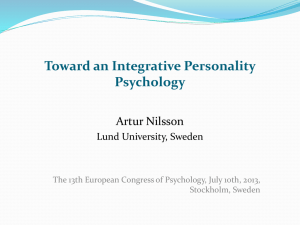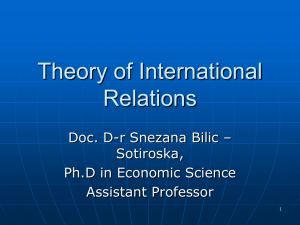Children and Worldviews
advertisement
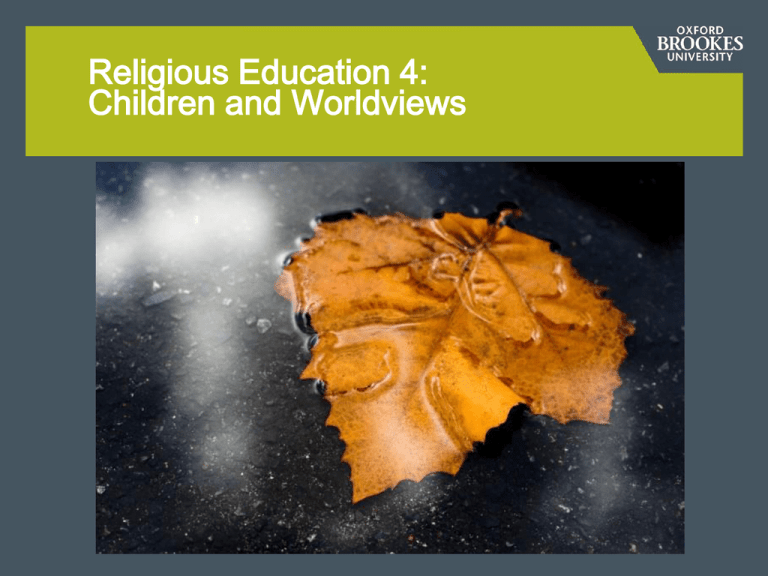
Religious Education 4: Children and Worldviews The ‘Children and Worldviews’ Project The Children and Worldviews Project - Theory Erricker, C (2000a) The Children and Worldviews Project: A Narrative Pedagogy of Religious Education, in Grimmitt, M (ed) Pedagogies of Religious Education, Great Wakering: McCrimmons, pp.188-206 The Children and Worldviews Project - Practice Erricker, C (2000b) Enactive Storytelling, in Erricker, C and Erricker, J (eds) Reconstructing Religious, Spiritual and Moral Education, Routledge, pp.181– 189 [Chapters 7 – 11 of this text explore other ways of applying this pedagogy] The Children and Worldviews Project - Critique Wright, A (2001) Dancing in the Fire: A Deconstruction of Clive Erricker's Postmodern Spiritual Pedagogy, Religious Education, 96:1, p. 120 - 135 The Project 1993 - 2000 Funding University College, Chichester King Alfred’s College, Winchester La Sainte Union College, Southampton Personnel Clive Erricker, Jane Erricker, Danny Sullivan, John Logan, Cathy Ota The impetus Consider the two attainment targets AT1 (Learning about) and AT2 (Learning from); conviction that religious education was too ‘content led’ and paid insufficient attention to the experiences of young people. Following the introduction of ‘nonconfessional RE’ in 1988, schoolbased RE had begun to mirror university departments of religious studies, an academic discipline with broad ‘world religions’ content and a ‘phenomenological’ approach. (cf Grimmitt, 2000, Introduction) Influences ‘Attainment’ Dominance of 80s and 90s education by a ‘competences’ model that emphasises content and skills in establishing what a child has ‘learnt’. Neglect of the ‘whole child’ and the idea of personal transformation. Dialogue Trust , respect and willingness to learn are not adjuncts to or prerequisites for earning but integral to it. Dialogue as the site of learning. Theodore Roszak: “We all bring into school a wholly unexplored, radically unpredictable identity. To educate is to unfold that identity – to unfold it with the utmost delicacy, recognising that it is the most precious resource of our species, the true wealth of the human nation.’” v. Traditional justifications of RE as ‘enculturation’ into shared Christian values, even implicitly under the banner of ‘moral education’ The Research To explore what mattered in children’s lives and, using conversational technique, explore the issues that they raised. The reverse of what normally happens during curriculum construction To discover what the curriculum ‘leaves out’ of education Raises Questions: 1. What are schools for? 2. What needs to be ‘delivered’ to children? Postmodern Epistemology The Critique: The alternative: Post-enlightenment, rationalist account of education has forced Religious Education to emphasise its ‘knowledge’ content o Emphasis on a ‘subjective’ model of knowledge that pays attention to emotional and affective ways of knowing Predominantly descriptive character of phenomenological enquiry, emphasis on knowing the ‘facts’ o Knowing as relational and linked to a narrative context Focus on studying ‘belief systems’ that make objective ‘truth claims’ o No ‘absolute’ knowledgeknowledge is relative The proposal: To treat ‘grand narratives’ as constructions rather than descriptions of reality To put children’s ‘small narratives’ at the centre of RE Conversational Strategy Aim: to encourage narrative responses to stimulus material Attending to the means by which meaning can be articulated ‘Self-revelatory’ nature of these conversations requires a rethinking of traditional teacher-child power relationships Attending to the degree of security provided Empathy Attending to the degree of negotiation required Genuineness Attending to the degree of freedom and independence required (cognitively, spiritually and emotionally) Attending to the balance of authority and authoritative statements Unconditional Positive Regard Immediacy The Findings Children find it important to talk about particular themes: Relationships Secret Places Ethnic Identity Religious Affiliation Death Separation The Environment The Process: Children strive to find the right words or metaphors to express complex and deeply felt issues Verbalisation is part of the development of self-understanding and self-discovery Sharing feelings facilitates empathy and mutual understanding Children construct their worldviews through narration This is a dynamic process with no final or end product, and where there is no sense of ‘development’ except change Guidelines When the children raise an issue, allow them to talk freely even if they appear to be going off the point. The most valuable reflections often come unexpectedly. Allow them to talk about their own experiences and how they feel about them. Try not to jump in with judgements about their expressed positions, but allow them to express themselves fully, to explain their positions, and to be challenged by other children before being challenged by you as a teacher. Discussion between the children is much better for their development than a conversation between teacher and pupil. Evaluating the pedagogy: Assumption of a postmodern epistemology. To what extent are narratives ‘constructed’? Does the rejection of absolute knowledge entail a rejection of the endeavour of discovering truth? Is there an over-emphasis on AT2, construed as ‘responding’? Students dictate what they are responding to – does RE collapse here into PSHE? Does religious material have an educational ‘gift’ to offer children? Erricker in more recent work has moved away from an emphasis on postmodern epistemology and recommends a critical engagement with religious concepts as an essential part of ‘worldviews education’ Activity 1. Carefully read Erricker’s description of narrating about death and consider using the story of Freddie the Leaf as a conversation stimulus 2. Go out and see what you can pick up – twigs, leaves, stones, discarded objects etc. 3. Consult the agreed syllabus and decide what theme and age range you are planning for 4. Consult the non-statutory national framework to determine the skills and range of attainment you are attempting to address 5. Plan a lesson or sequence of lessons incorporating Erricker’s narrative pedagogy 6. Make sure that you add to your poster your group’s reflections on the planning process and the value of the pedagogy
